Unique Museums in Croatia to Add to Your Travel Itinerary
July 3, 2022 - You may have some empty spaces left in your travel itinerary, and a great way to fill them is with a dose of culture, history, and information about the place you're visiting. Here are some unique museums in Croatia that will amaze you and your family.
Visiting museums never seems to fail as a plan during your trip. No one likes that feeling of coming home and thinking that you didn't learn anything about the destination you visited. Let's see, it is not mandatory to do so, but in a country with so much history and folklore like Croatia, not going to at least one museum is missing a great opportunity to enrich your trip.
Sinjska Alka museum
I remember it was a beautiful morning on October 31st last year, and it was my parents' wedding anniversary. In an unprecedented act of randomness, I suggested doing something other than staying home in Split and, instead, take a ride somewhere in the county. We chose Sinj, which we had never visited before. We knew little or nothing about the great history that preceded this town just 40 minutes away. My parents knew the figure of Our Lady of Sinj, but we were unaware of the origin of her devotion. While there are many ways to learn about the history of a destination, and today the internet can surely make it easier, one place, in particular, helped us fully understand the greatness of Sinj and its importance in the country's history.
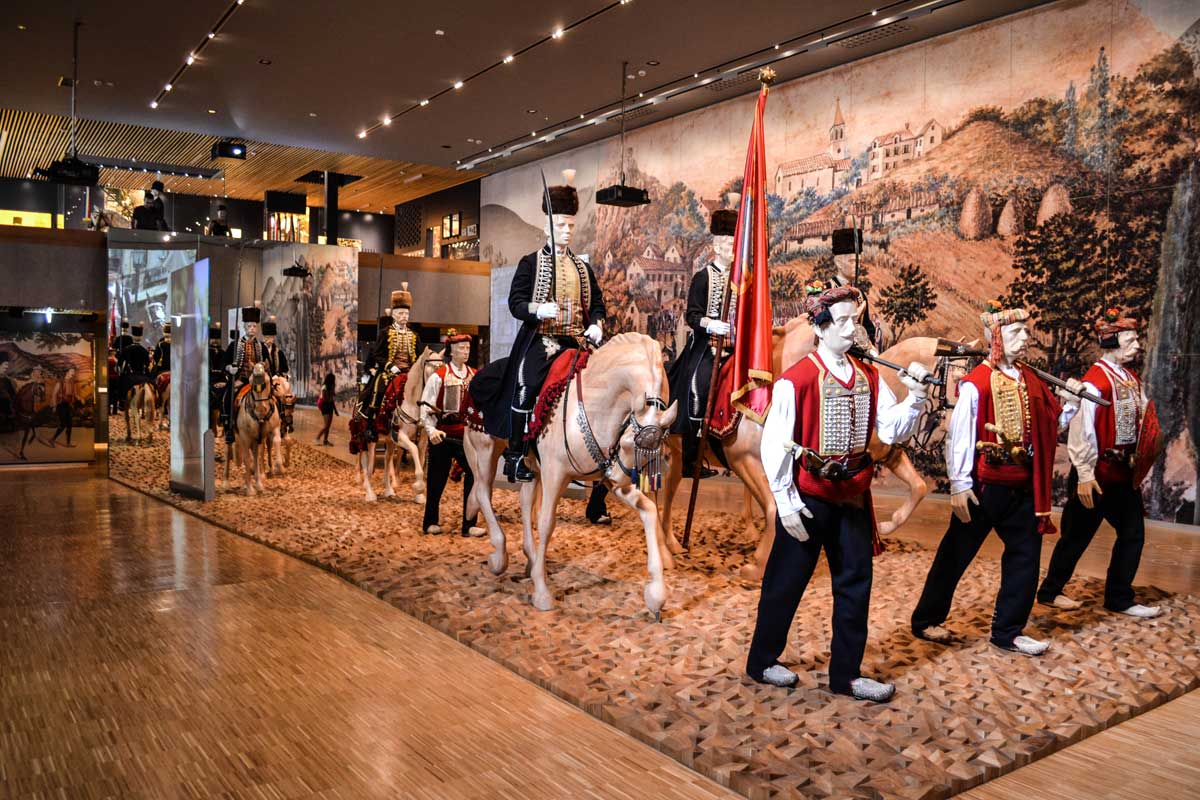
Image: Sinj Tourist Board
The most curious thing is that we came across the Sinjska Alka museum when we were just about to leave. The Sinjska Alka museum is a very modern information center that not only tells the story of Sinj in a detailed and interactive way but also celebrates its traditions and folklore. For those not too familiar, one of the most spectacular military feats was achieved in Sinj, in which no more than 700 inhabitants managed to protect the city from around 60,000 Ottoman soldiers in 1715 during the Venetian-Ottoman war. For this reason, that feat has been celebrated since then on the first Sunday of August, through an equestrian competition called the Sinjska Alka, in which competitors must try to point their spear at a hanging metal ring (alka). It is one of the most important cultural events in the country, and surely visiting the museum is a great introduction if you plan to attend.
Nikola Tesla House Memorial
Nikola Tesla is surely one of the most influential people in the history of mankind, and the recognition that was perhaps lacking at that time is beginning to be regained over time. However, few know where to go if they want to learn more about one of the most outstanding geniuses who walked the earth, and that is that Tesla was everywhere. Not many may know it, but Nikola Tesla was born in Smiljan, located in Gospić in Lika-Senj County, in what is now Croatian territory. The house where he grew up remains on the same site and has been converted into a memorial and museum, where visitors can learn more not only about his inventive side, but learn more about his humble origins and childhood.
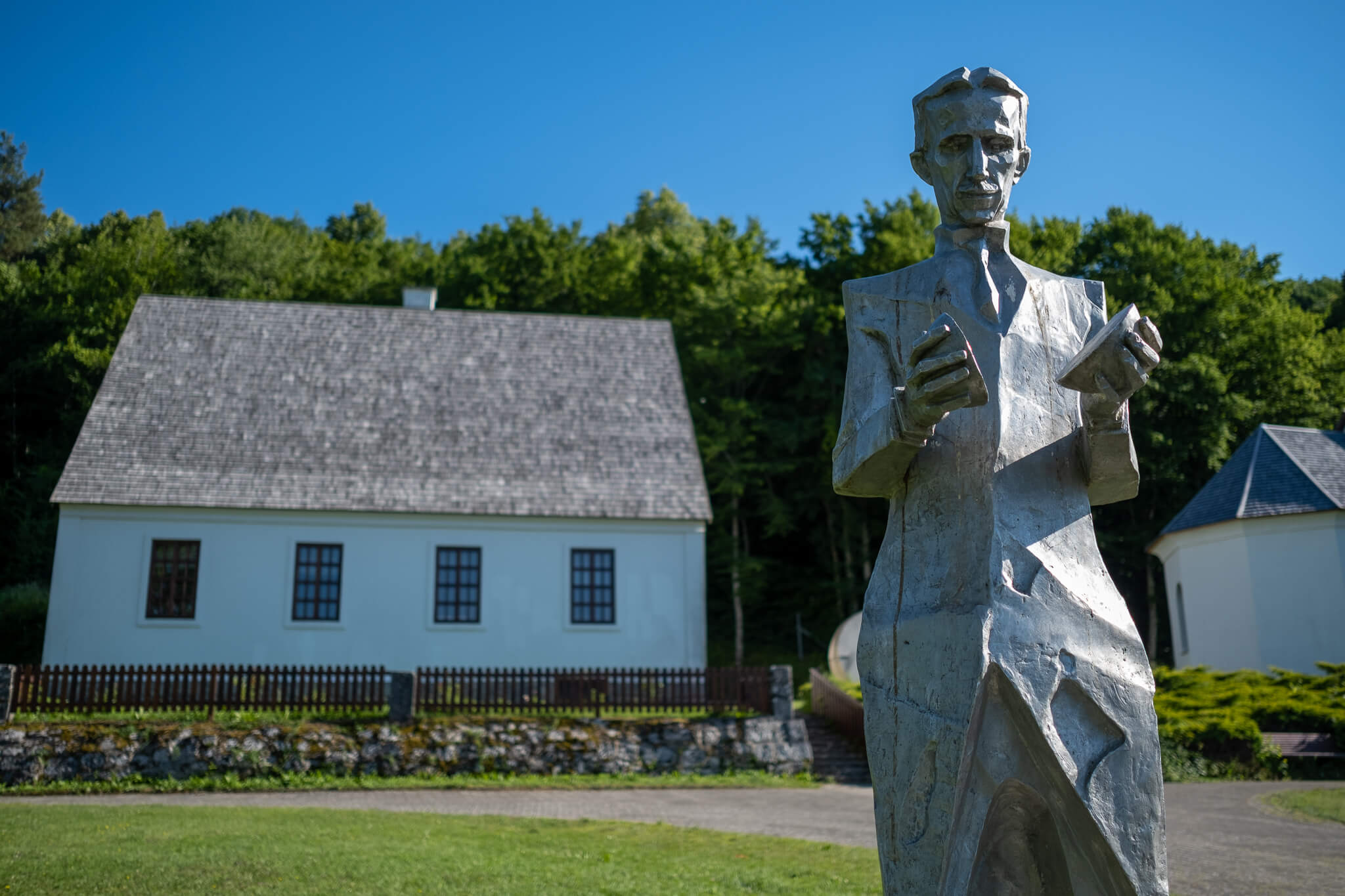
Photo: Jose Alfonso Cussianovich/Total Croatia News
I had the pleasure of visiting the Nikola Tesla memorial center a few weeks ago, and one of the first things that crossed my mind was how easy one could visit it, and how easily we miss it. If you are going from Dubrovnik, Split, Šibenik or Zadar to Zagreb, and vice versa, then you cannot miss the opportunity to visit the birthplace of Nikola Tesla. If you are on the E71 highway, make sure to take the exit for Gospić. In Smiljan, not only will you find a very modern and brilliantly organized house museum to get to know Tesla better, but you will feel very special and inspired just by being there. At least that was my experience.
Medvedgrad castle
Those in the Croatian capital will quickly notice that there is enough history in it to even find some time to explore the surroundings. However, we encourage you to fit Medvegrad Castle into your itinerary, even if it means sacrificing other ideas. Not only are we talking about one of the best views you can get of Zagreb, but Medvedgrad Castle is not like other medieval fortresses you have visited before. In addition to the fact that the castle is very well preserved, you will be in for a big surprise once you enter the south tower of the castle.
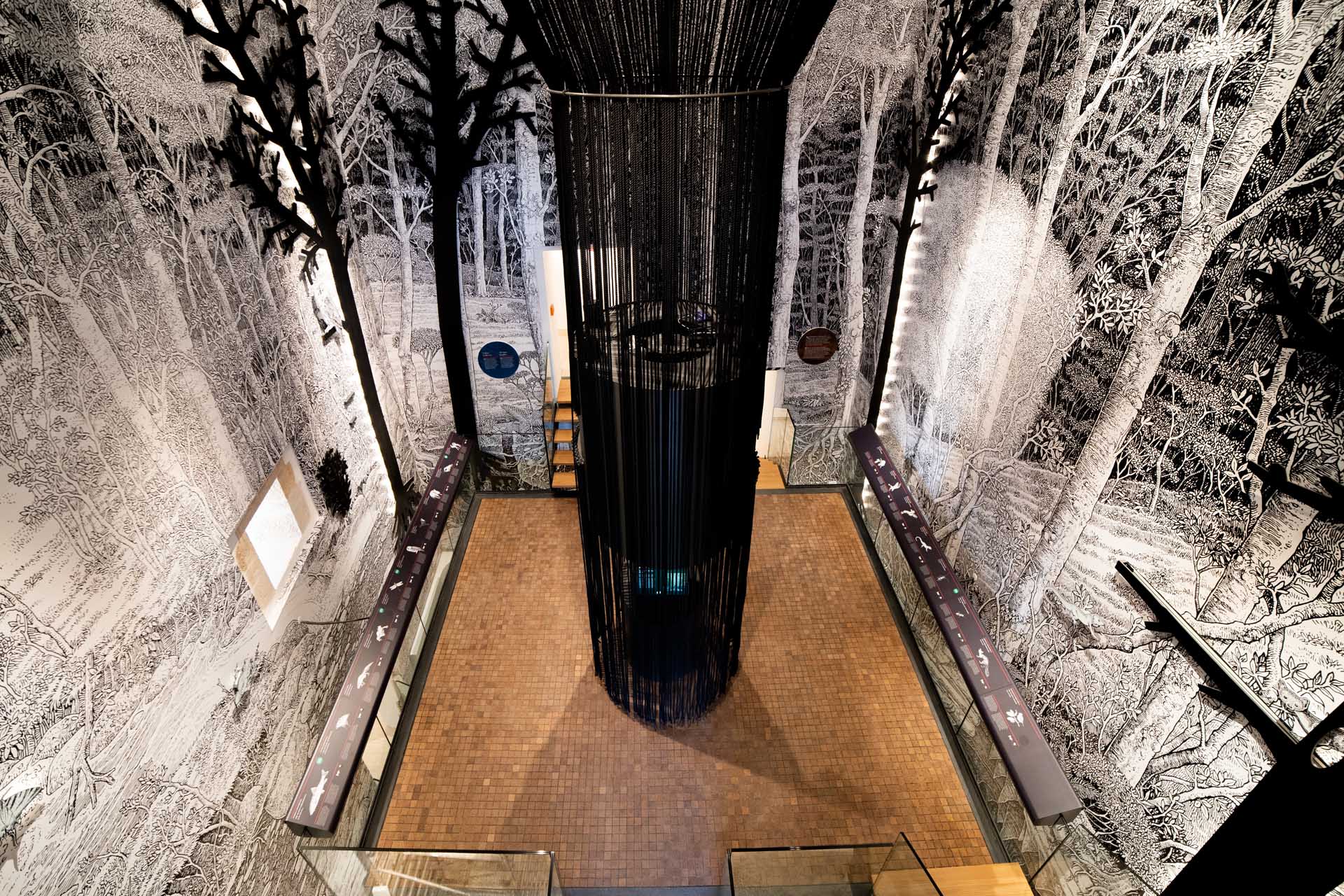
Image: Medvednica Visitor Center
After three years of renovation, the visitor center was finally reopened to the public at the end of October last year and the result is spectacular. Visitors have the opportunity to learn interactively not only about the history of the castle but also about the entire area that comprises the Medvednica Nature Park. The interior of the tower has been designed in such a way that visitors, both adults and children, can easily engage with the cultural, historical, and natural values of the place. As a bonus, close your visit by climbing to the top of the tower, an unbeatable viewpoint to enjoy a wonderful panorama.
Maritime and History Museum of the Croatian Littoral in Rijeka
We hope it is not too late to post this disclaimer, but it is worth mentioning that we are not ranking museums, nor are we ignoring others in the same city. We say this because Rijeka is where many very interesting and unique museums are located, like the PEEK&POKE computer museum among them. In this list, we want to mention Rijeka's Maritime and History Museum of the Croatian Littoral, and although almost all large coastal cities have a maritime museum, the one in Rijeka can boast of having a very valuable possession.
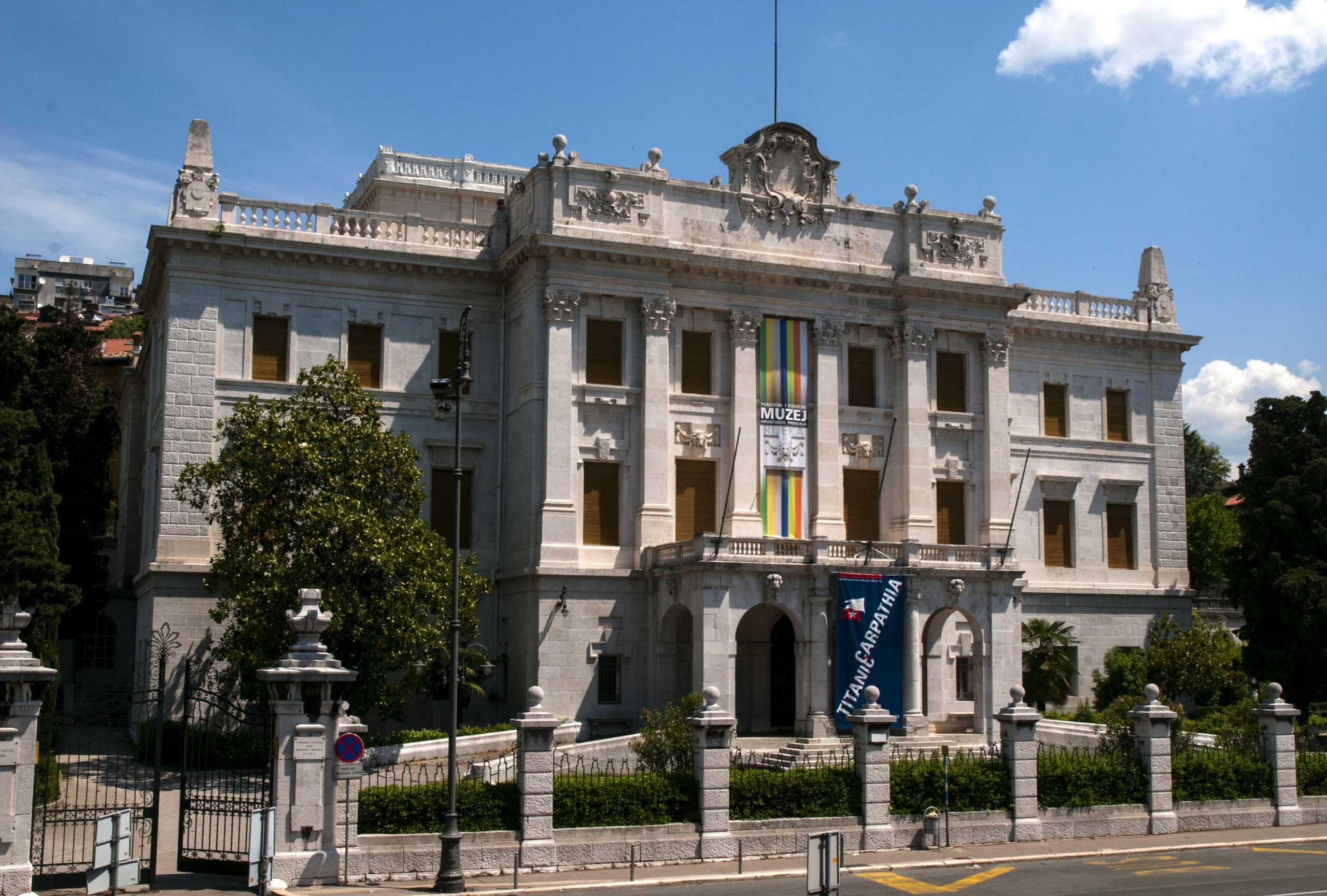
Image: Rijeka Tourist Board
Many know the tragic story of the sinking of the Titanic on April 15, 1912, but few are familiar with the story of the Carpathia, the first ship to come to the aid of the hundreds of passengers waiting to be rescued. The Carpathia has just left New York for Rijeka, and on the fateful night of the Titanic's sinking, she changed her course because she was the closest ship to her. The Carpathia managed to rescue 712 people among the 2,200 passengers and crew and arrived back in New York with the rescued on April 18. Shortly after, the Carpathia returned to her normal duties and docked in Rijeka on May 8, where she received a standing ovation from the crowds for her heroic feat. An 18-year-old Croatian steward from the Carpathia crew collected one of the discarded life jackets, donating it to Rijeka's Maritime and History Museum of the Croatian Littoral in 1938. After some time in storage, the life jacket was restored and exhibited to this day, thus becoming one of the most treasured items in the museum.
For more on travel in Croatia, follow TCN's dedicated page.
Two Palaces in Zadar Will Host Croatian Modern Art From July
April 4, 2022 - TCN met Dina Bušić, the city of Zadar's head of culture. She explained the new project Two Palaces in Zadar, which will host the best exhibitions of Croatian Modern Art from July.
The City of Zadar has finally found a solution for the future of the Two Palaces: starting from July this year, the artworks from the National Museum of Modern Art in Zagreb will move into the premises of the Proveditor and Rector's Palaces. With this Agreement of Cooperation signed by the City of Zadar, the Ministry of Culture and Media, and the National Museum of Modern Art, Zadar has become a new centre of modern art in Croatia.
The way to achieve this result has been paved by Dina Bušić, the city's head of culture. She’s confident that thanks to this enormous renewal commitment, Zadar will be rediscovered for its archaeological history, tourism, it’s architectural treasures such as the well-known Greeting to the Sun and the Sea Organ, and eventually as a centre for Croatian modern art.
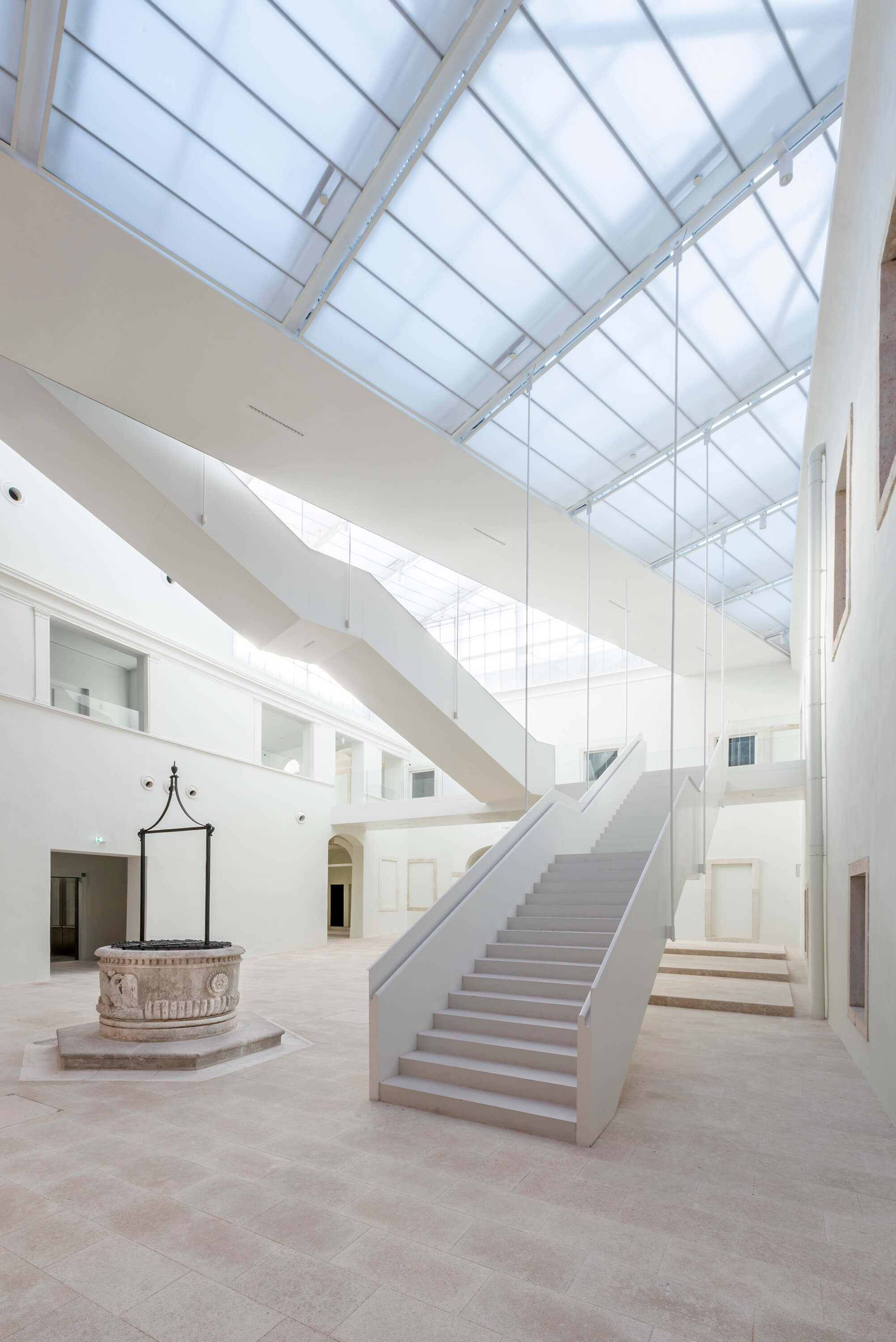
Image: Bosnic / Dorotic
Dina Bušić, could you please give our readers a brief history of the Rector's and Proveditor's palaces?
For centuries Rector's and Proveditor's palaces were the centre of secular power in Zadar and Dalmatia. The construction was done in stages: Rector's Palace was built during the Middle Ages and instead Proveditor's Palace in the late Renaissance. The buildings have undergone numerous adaptations over time. Although architecturally connected and with a similar purpose, they remained functionally separated until 1870, when under Austrian rule, they were bound and arranged for the new administrative complex of the Zadar Government.
The Rector's Palace is located in the western part of the Two Palaces complex, and it is the oldest building. It was first mentioned in historical documents in 1288 as the gathering place of the city council of the independent medieval municipality of the city of Zadar. Under Venetian administration, the city duke was housed here. In the 17th century, the Proveditor's Palace was added on the east side. The year 1607 is engraved in an inscription on the façade. The General Proveditor of Dalmatia and Albania was in a higher grade than all city princes and captains and resided in Zadar as this was the capital and the most important port on the eastern Adriatic coast.
What were the purposes of these 2 palaces before the Homeland War? Which institutions and cultural bodies operate within the Palaces?
After 1920, when Zadar passed under the Italian administration with the Treaty of Rapallo, the complex lost its former purpose. No practical purpose was found until the end of the Second World War when it became the site of various cultural institutions of the city of Zadar, so the people of Zadar called it the House of Culture. The City Library, the Blagoje Bersa Music School, the Croatian Singing Music Society Petar Zoranić, and Radio Zadar were located on the complex premises. At one moment, the Registry Office was also located here, where many Zadar residents got married.
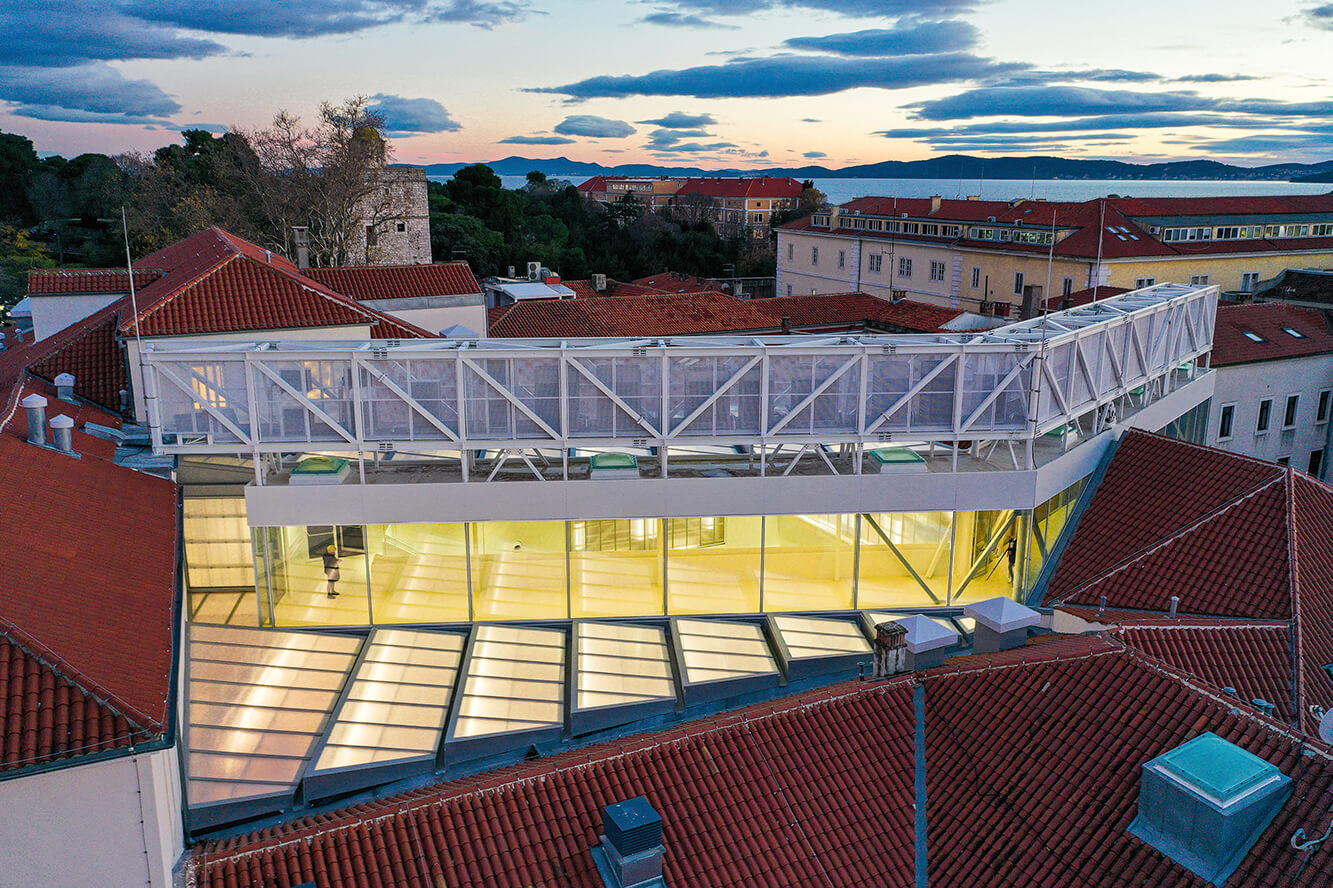
Image: Filip Brala
How were the Palaces damaged during the Homeland War?
These two palaces suffered enormous damage during the Homeland War. Several cannon shells hit the north and west wings of the Rector's Palace and the south wing of the Proveditor's Palace. The bombing raids that affected the palaces occurred in late 1991 and early 1992. A large part of the roof was destroyed, and the statics of the Rector's Palace was damaged, and the structure suffered severe deformations. The building was declared unusable.
The Great and Small Concert Halls of the Blagoje Bersa Music School and the Croatian Singing Music Society Petar Zoranić Hall were destroyed in the Rector's Palace. Also, all the musical instruments that were in these halls were destroyed. The city library was not affected but suffered significant damage to its rooms and inventory. The multimedia centre of Radio Zadar was hit, and the technical equipment was damaged.
When the renovation began, first the Rector's and then the Proveditor's Palace, who financed the reconstruction and designed the connection and the renovation of the Two Palaces?
The first reconstruction works started during the war - back in 1993. The Conservation Department in Zadar began collecting documentation and conducting an onsite inspection of the first floor of the Rector's Palace. In 1999, extensive exploration, dismantling, and cleaning work developed a consolidation and complete renovation project. At the Rector's Palace, for the first time in Zadar, a new method called "pulling the wall" was used, consisting of an iron rope to bring back the sloping north wall to a vertical position.
The renovation of the Rector's Palace was fully completed through a project funded by the EU Structural Funds for 2007-2013. The renovation and touristic valorisation of the cultural and touristic complex of the Rector's Palace began on October 2nd, 2014, and ended on September 30th, 2016. The project coordinator was the City of Zadar, and the implementing partners were the National Museum of Zadar, the Zadar Tourist Board, the Zadar County Development Agency - ZADRAnova, and the University of Zadar.
After the renovation of the Rector's Palace, the City of Zadar continued with further investments in strategic infrastructural facilities of cultural heritage through the ZADAR HERITAGE project, which was co-financed under the Operational Program "Competitiveness and Cohesion" 2014-2020.
Renovation and connection of the palaces in the complex Two Palaces as a single unit were carried out based on a project developed by Iva Letilović and Igor Pedišić, which through a bold and attractive solution of the so-called snake, united the space of two palaces.
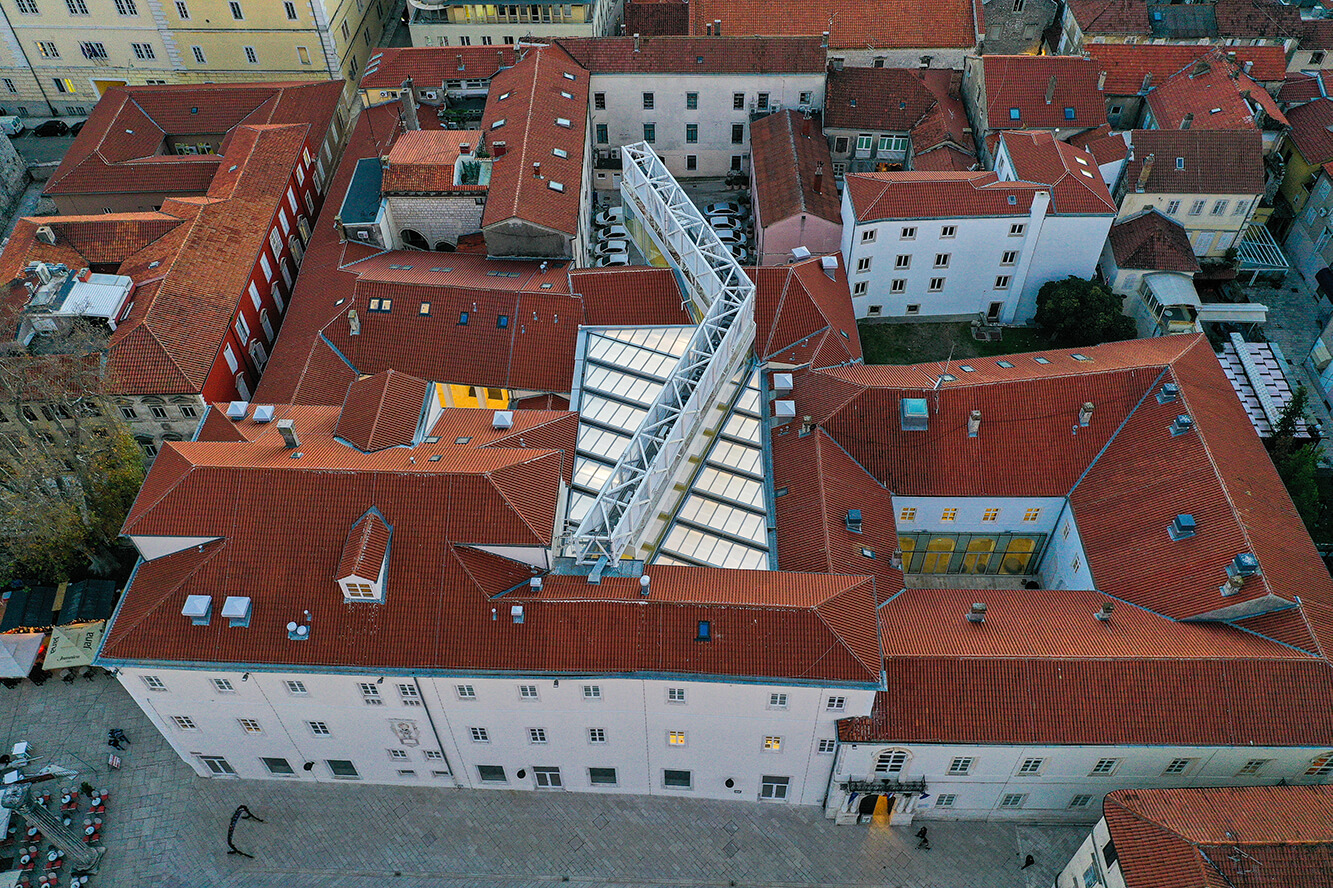
Image: Filip Brala
What is the purpose of the two palaces after the renovation, what are the contents, and how much will it mean for Zadar to enrich the cultural life and promote Zadar on the cultural map of Europe?
The Two Palaces complex is intended as a central place in maintaining the cultural life of Zadar with exhibitions, concerts, dance and theatre performances, film screenings during festivals, conferences, receptions, and other events from the cultural and social life of Zadar.
On the ground floor of the building, all the spaces and halls can serve as museum facilities, such as a museum shop, a reading room, an educational workshop, an entrance area, a cloakroom, and a space for catering activities. On the first and second floors, the halls for the permanent exhibition were reconstructed and arranged. On the third floor, closed halls were reconstructed and arranged.
What does the cooperation of the Two palaces with the National Museum of Modern Art (NMMU) mean?
NMMU is one of the collaborators of the Two Palaces, in the same way as the Zadar National Museum, with which we nurture long-term cooperation within the Rector's Palace. Namely, there was a unique opportunity through which we, in collaboration with the director of NMMU, Branko Franceschi, crystallised the idea of the decentralisation of national artistic treasures.
It means that they will find a second home here in Zadar and that we will have the greatest works of the late 19th and 20th centuries from Croatia here available to everyone in a precious art space. I am convinced that having our Croatian national art in the heart of Zadar is one of the best experiences that visitors can have and that with this approach, we will open the door to a whole new series of collaborations.
When can we expect the first exhibition?
We will soon hold a press conference and present a detailed program. We will open on April 20th with a rich program of arts, music, books, and films. In ten days, The Two Palaces will offer more than thirty events. Stay tuned, and all be welcome!
Lifestyle: For more, check out our lifestyle section
Dylan Dog in Vukovar: 35 Years of Famous Comic Series in Croatia
It’s been 35 years since Dylan Dog made his first appearance in Croatia. An exhibition dedicated to the popular comic series opens in Vukovar on December 8th, 2021
Here at TCN we’re well aware there’s plenty to see in eastern Croatia all year round. That being said, we still get an occasional surprise - it’s not every day that you see Dylan Dog and Vukovar in the same sentence.
It’s been 35 years since Dylan Dog was first introduced to Croatian readers, just one year after its first Italian edition published in 1986. It soon gained a cult following and remained massively popular in Croatia to this day.
To celebrate the 35th anniversary of the beloved comic series in these parts, an exhibition of selected illustrations and notable Croatian editions of Dylan Dog is being put up in the Vukovar Municipal Museum.
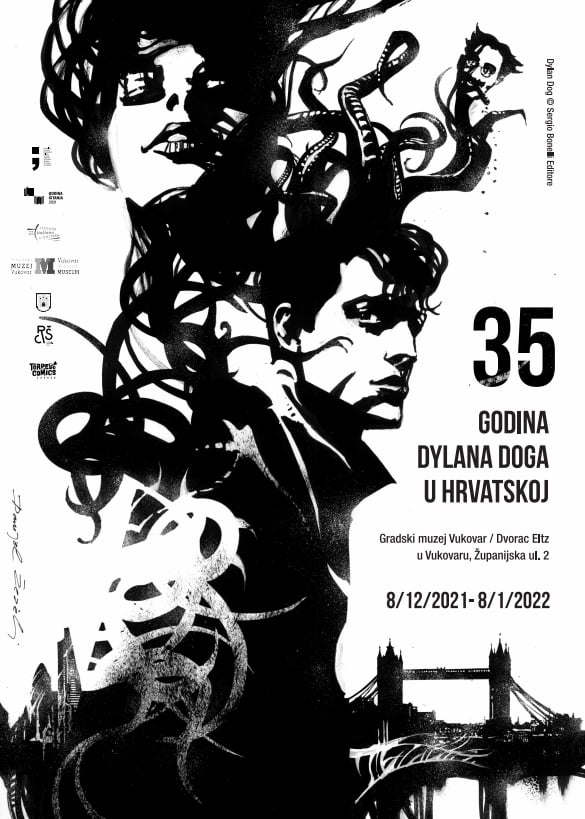
It’s worth noting that some of the works on display feature well-known landmarks from the Croatian capital, such as the Zagreb cathedral, the Cibona tower and the iconic Džamija!
The exhibition was first displayed in Zagreb earlier this year, organized by the association Crtani Romani Šou in collaboration with the Italian Institute of Culture. It’s now heading to eastern Croatia, to the beautiful Eltz Manor that houses the Vukovar Municipal Museum.
The exhibition opened today, December 8th. It will remain on display until January 8th, 2022 and can be visited free of charge.
Address: Dvorac Eltz, Županijska ulica 2, Vukovar
Working hours: Tuesday - Sunday 10am to 6pm
Varazdin Old Town Nominated For Croatia's Second European Heritage Label
January 11, 2021 – Comparable to UNESCO's World Heritage List, the European Heritage Label is given to sites that have played a significant in the history, culture and values of Europe. If successful, Varazdin Old Town will be only the second site in Croatia to receive the classification
They say that Northern Croatia has more castles, fortresses and stately homes than any other region in the country. And they are probably right. Not that the names and locations of all are widely known either in the country, and certainly not outside. Truth be told, some of the structures included on Northern Croatia's list of important buildings have lain derelict for centuries. In others, the decline has been more recent. The best way to preserve such buildings seems to come from reimagining them for contemporary use, rather than simply preserving them in aspic or amber.
That is something that Varazdin Old Town does extremely well. All of Northern Croatia's famous castles do this well - Čakovec castle, Trakošćan, Veliki Tabor and Gornja Stubica. It's the reason they are famous. By opening up their doors as museums and event spaces, they attract hundreds of thousands of visitors each year and they get to tell their stories. And the story of Varazdin Old Town makes it perfect for the European Heritage Label.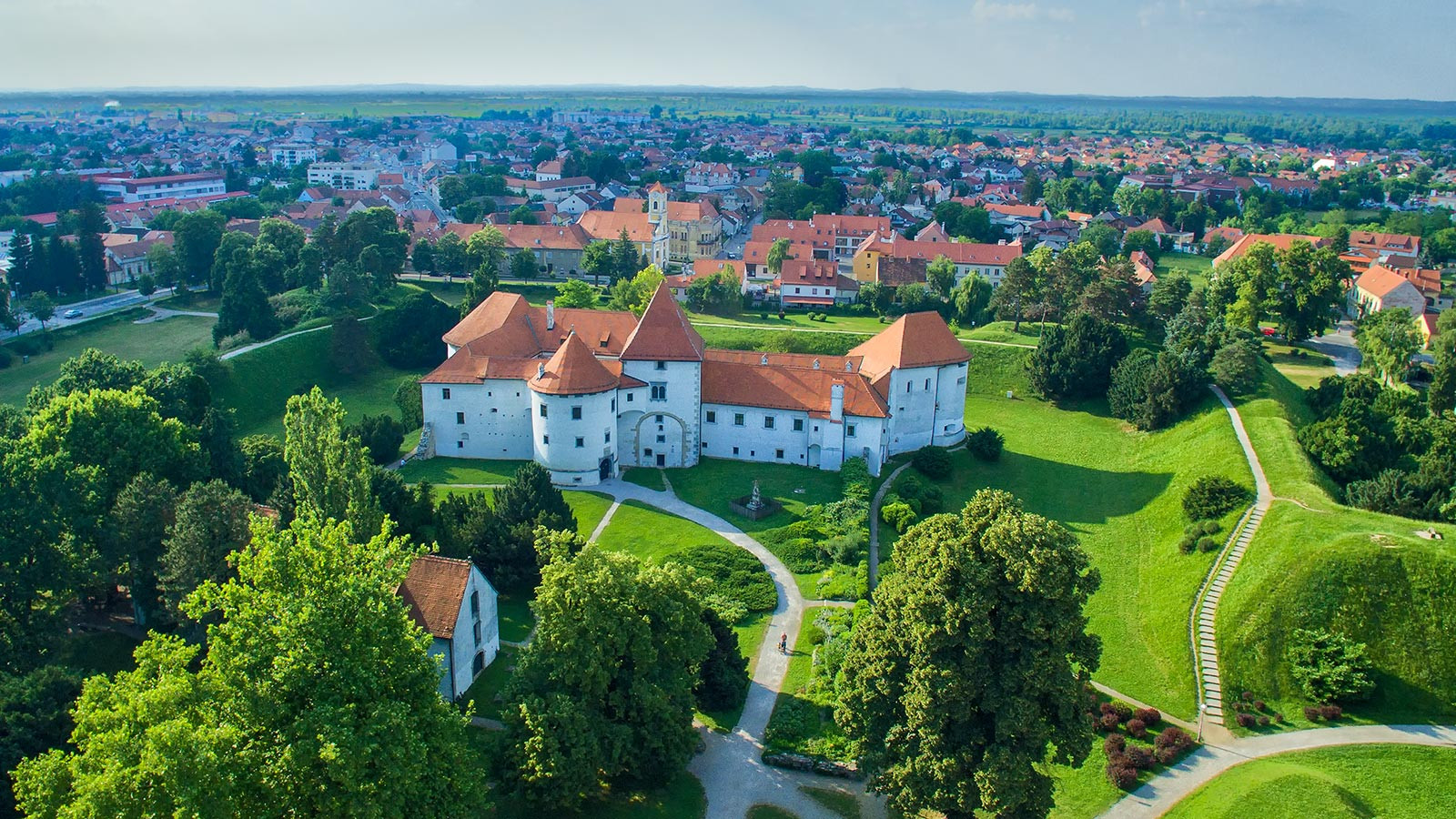 © Ivo Biočina / Croatia National Tourist Board
© Ivo Biočina / Croatia National Tourist Board
Varazdin Old Town is today inhabited by the Varaždin City Museum. They give guided tours around the fortress that was once the full extent of Varazdin Old Town. This city museum is the best way to learn about Varazdin's extraordinary buildings, culture and history. The museum has undertaken this role, and that of preserving items from Varazdin's past, since 1925. It has four permanent exhibitions and six major departments – Archaeology, History, Cultural History, Ethnographical, Entomology and the Gallery of Old and Contemporary Masters, some of which are inside the Old Town fortress itself.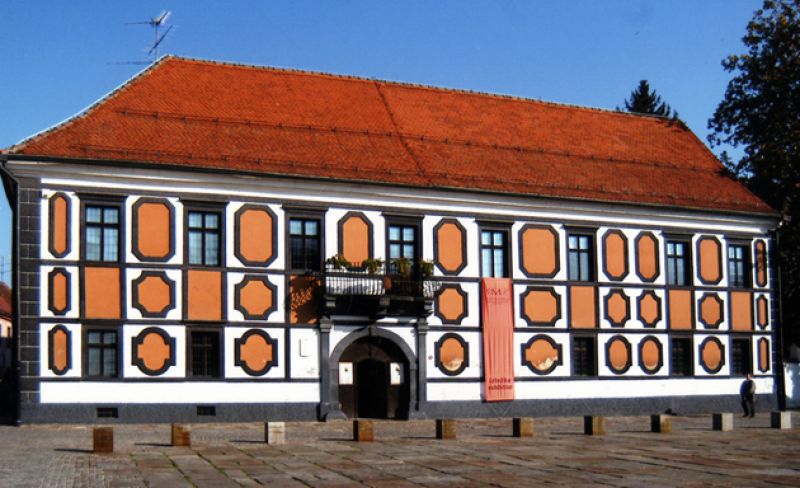 The Gallery of Old and New Masters of Varaždin City Museum © City of Varazdin Tourist Board
The Gallery of Old and New Masters of Varaždin City Museum © City of Varazdin Tourist Board
The Old Town fortress itself is medieval in origin, its construction having begun in the 14th century. Its Gothic towers were added a century later and the collection of buildings was remodelled and added to right up to the 19th century, in response to its inhabitants and its purpose.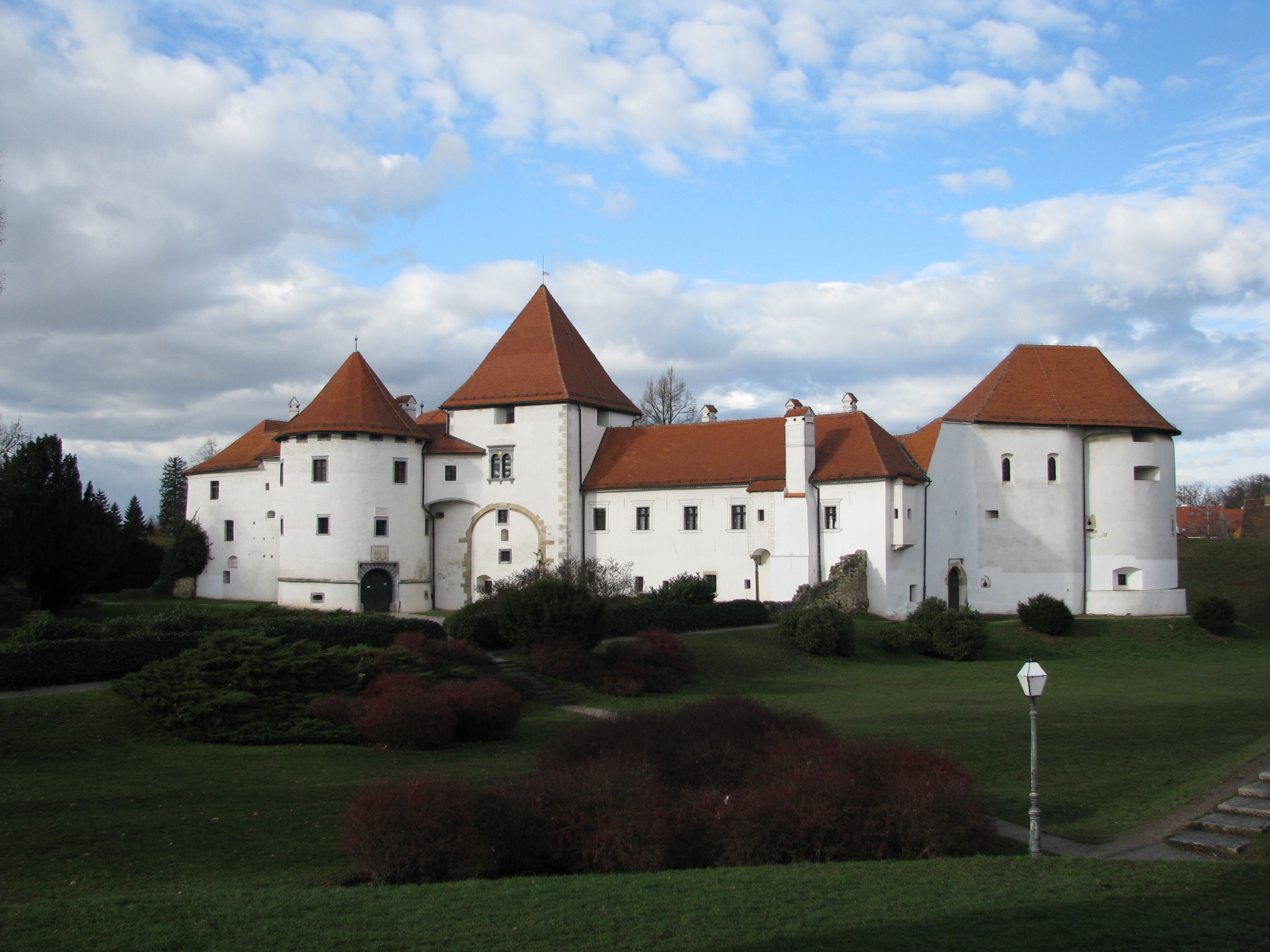 © Ex13
© Ex13
For defence against the Ottomans in the 16th century, it was reconstructed as a Renaissance fortress – high earthen walls with bastions were added, and a double moat. During the past, many noble families have lived here - the Counts of Celje, John Ungnada, George of Brandenburg and Croatian Ban Thomas Erdödyja and his successors. Indeed, Varazdin was once the capital city of Croatia, ruled from these very buildings. In its changing use, architecture and occupancy lies the story of not only the development of Croatia but that too of Europe and it is this that makes Varazdin Old Town eligible for the European Heritage Label.
The European Heritage Label is awarded to sites that bring to life the European narrative and the history behind it. The European Heritage label is currently awarded only every two years. So far, the only site in Croatia to receive the European Cultural Heritage Label from the European Commission is the Neanderthal Museum in Krapina. Its label was awarded in 2015.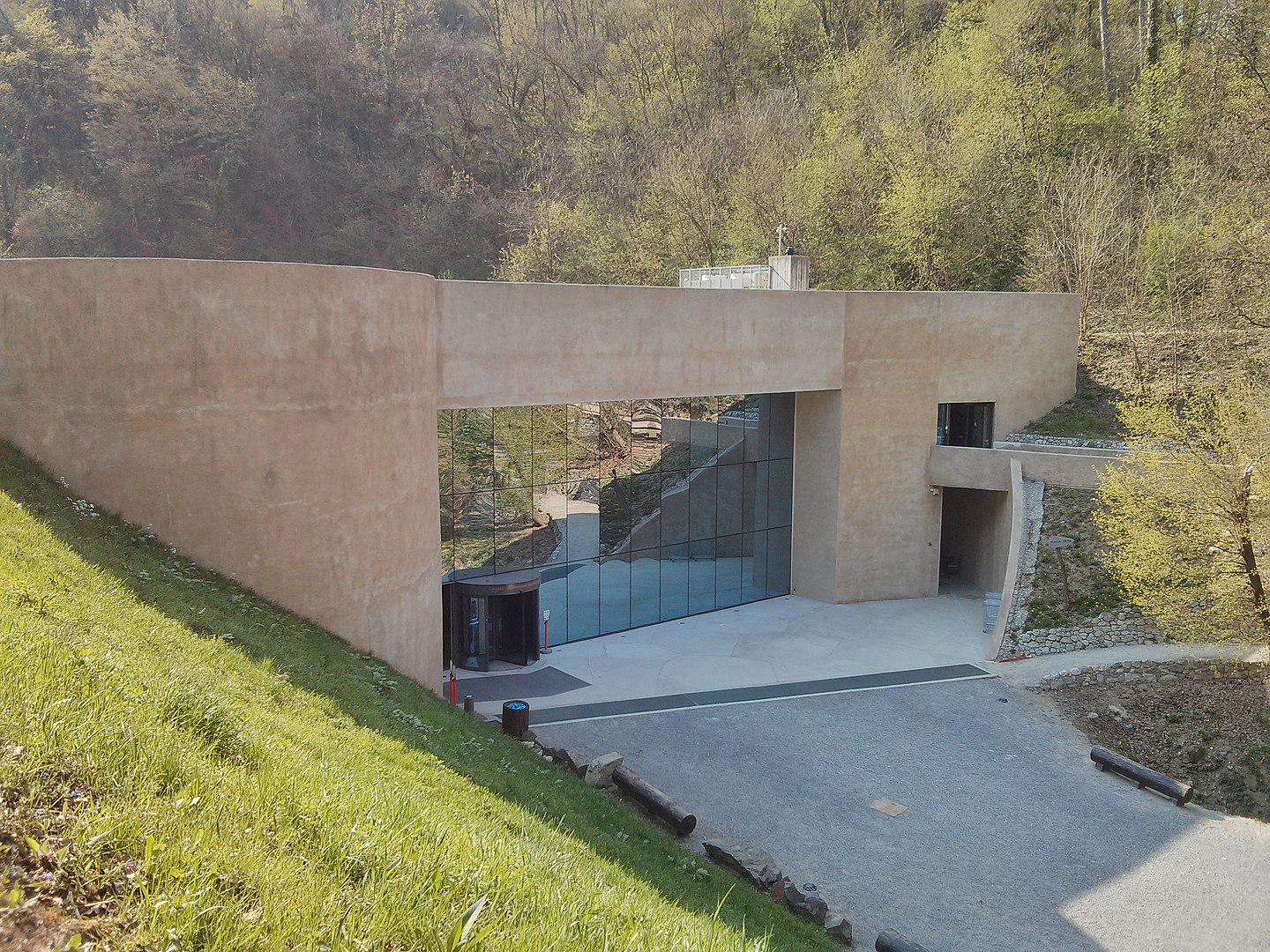 The Neanderthal Museum in Krapina, also in Northern Croatia. It received its European Heritage Label in 2015 © Zeljko Filipin
The Neanderthal Museum in Krapina, also in Northern Croatia. It received its European Heritage Label in 2015 © Zeljko Filipin
Zagreb Lauba's Revolutionary Redesign by World-Famous Japanese Architect
ZAGREB December 13, 2020 – .One of Croatia's best-loved gallery and event spaces will undergo a revolutionary new facelift at the hands of a world-famous architect. Zagreb Lauba's new look comes at the hands of internationally acclaimed Sou Fujimoto. A serial award winner, the architect's prominent works are found all over the world.
Newly-released images of how Zagreb's Lauba will look show an incredibly imaginative redesign. Echoing the avenue of trees that runs by the side of the gallery and event space, Sou Fujimoto has planned an oval-shaped garden roof space for the building in which trees will also be planted. The inspiration for the design came from Zagreb Lauba's name – it is a colloquial word used to describe a certain circular area of trees, the architect being informed of this by gallery owner Tomislav Klitschko.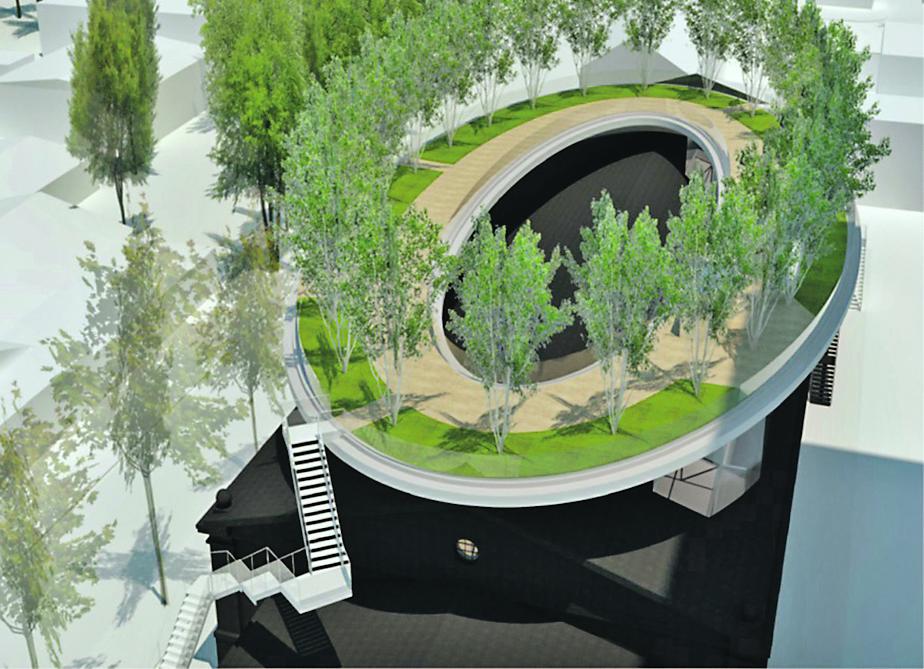 © Sou Fujimoto Architects / Lauba
© Sou Fujimoto Architects / Lauba
According to Jutarnji List's coverage of the redesign, by journalist Patricia Kish, the new roof garden space will be accessed by stairs and lift. Zagreb Lauba's design as it stands today was originally made by Alenka Gačić-Pojatina, who will collaborate on the new additions by Sou Fujimoto.
Zagreb Lauba's story dates back to 1910 when it was constructed by Emil Eisner and Adolf Ehrlich for use as a stables and riding school for the Austro-Hungarian army. It later became the weaving mill of the Textile Combine Zagreb, which it remained until being converted to a gallery and event space in 2008.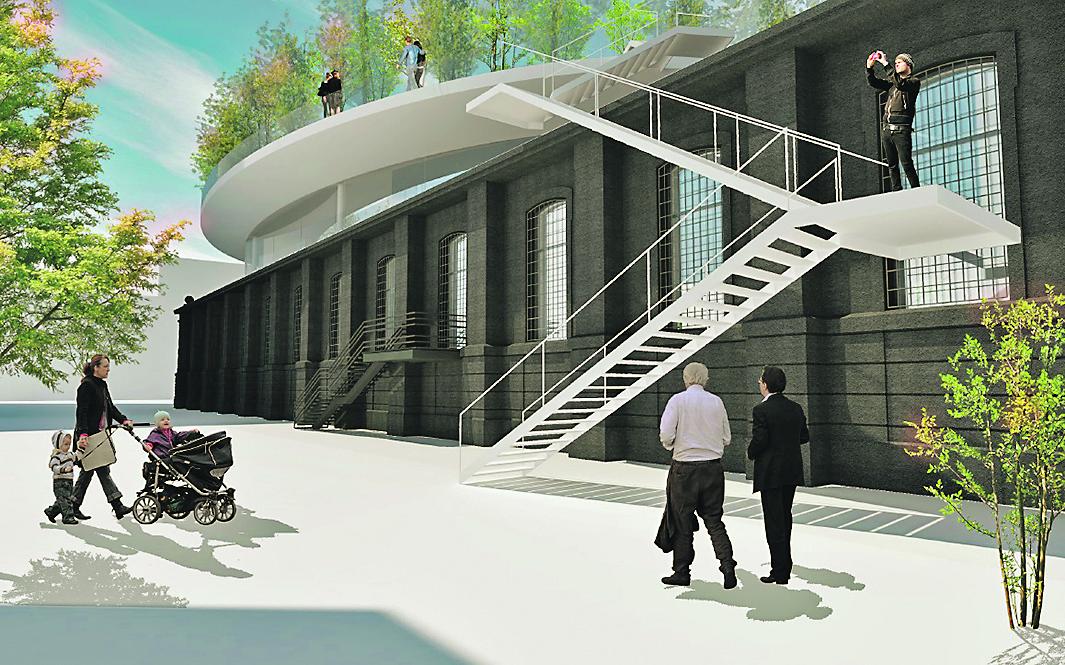 © Sou Fujimoto Architects / Lauba
© Sou Fujimoto Architects / Lauba
Sou Fujimoto is one of the most celebrated architects of Japan. He has won several prestigious awards for his work and the acclaim has made his designs much in-demand around the world. Often working with wood and natural materials, his designs can be found in London, Paris, Budapest and soon, at Zagreb Lauba's hands, in Croatia.
Lauba is a contemporary art gallery and its mission is to discover artistic expression by Croatian visual artists, and also participate in international cultural trends. Set in a huge black building near Črnomerec its exhibitions usually change around every month. In recent times it has also played host to large-scale electronic music events.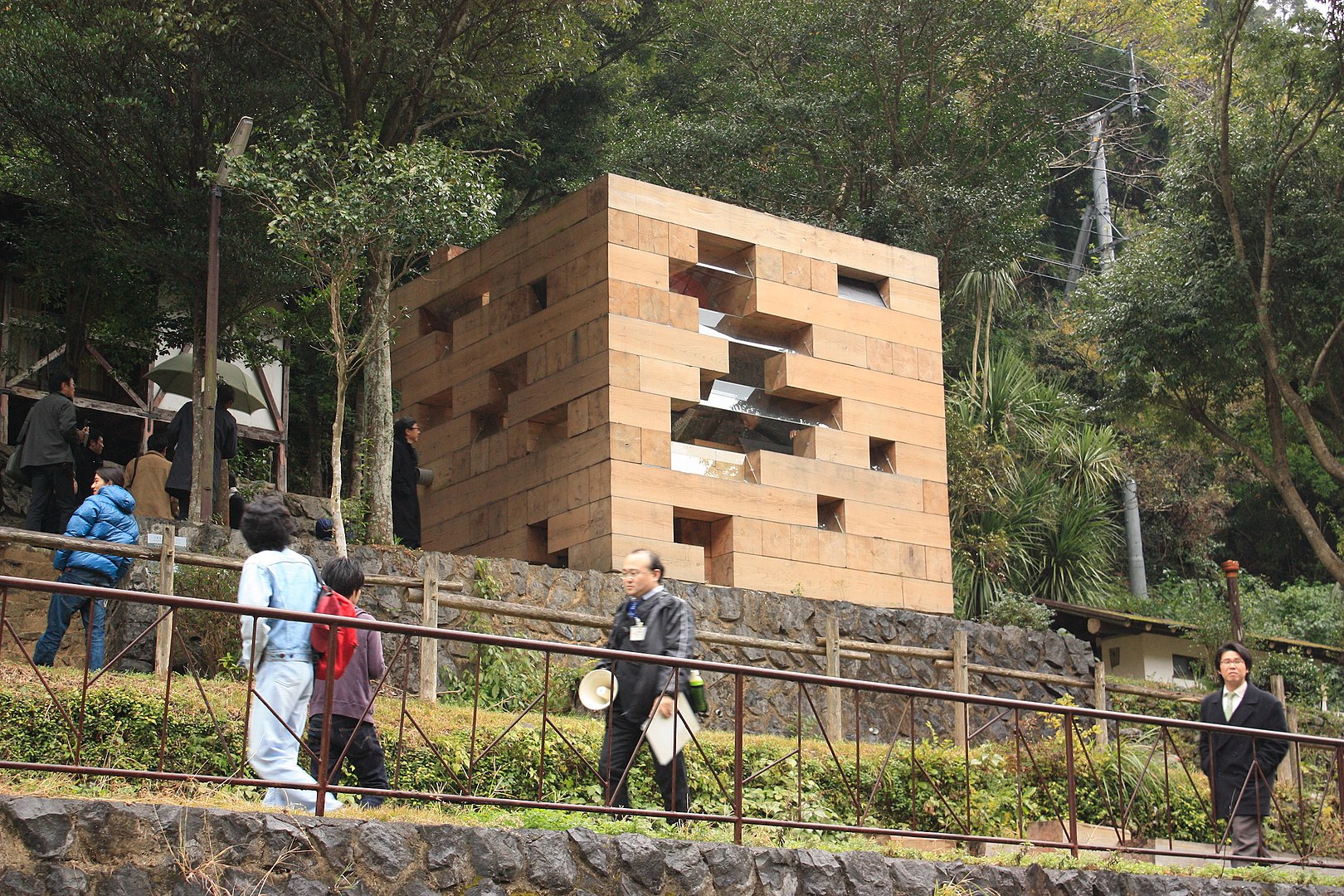 One of Sou Fujimoto's previous designs © Kenta Mabuchi
One of Sou Fujimoto's previous designs © Kenta Mabuchi
Museums in Croatia See Significant Decrease in Visitors, Millions in Losses
September 14, 2020 - After NEMO (Network of European Museum Organizations) published the conclusions of a study in May on the impact of COVID on museums, it was predicted that there would be a "long-term dramatic decline in revenue" until the end of 2020. A look at how museums in Croatia are coping.
HRTurizam reports that when museums began to open and tourists arrived at the beginning of the summer, there was hope that the drop in visits would not be as significant as predicted. Although cultural tourism accounts for 40% of the tourism in Europe, a certain positive trend of tourist arrivals did not affect the number of visitors to museums. Namely, only in July and August in Croatia, was there a drop in visitors of 79.18 percent.
The Museum Documentation Center (MDC) conducted a survey on a sample of the most visited Croatian museums, among which those that traditionally bring the largest number of foreign tourists in the summer stand out. In the first wave of the pandemic, many museums reported revenue losses ranging from 75 to 80%. According to the MDC, large museums and those located in tourist areas counted losses in the hundreds of thousands of euro a week.
According to the annual statistics collected and analyzed by MDC in recent years, the Archaeological Museum of Istria in Pula and the Split City Museum are the most frequently visited among the top five most visited Croatian museums, under which our most attractive ancient monuments are the Arena and Diocletian's Cellars, the Dubrovnik Museums, and in Zagreb, Klovićevi dvori and the Museum of Broken Relationships. The Nikola Tesla Technical Museum and the Museums of Hrvatsko Zagorje are also very popular, but foreign tourists do not make up most of the audience.
Although only at the beginning of 2021, when we collect statistical data for the whole of 2020 from all museums in the Republic of Croatia, will we be able to determine the dimensions of the number of visitors accurately. A decline of 79.18 percent was recorded on visits to these five museum houses in July and August according to the survey.
Dubrovnik museums in July and August 2019 had 84,480 visitors, and this year 18,197 or a minus of 78.4%. Last year, the Split City Museum recorded 99,761 visitors in the middle of the season, and in 2020, 15,589 or a drop of 84.3%. The Archaeological Museum of Istria, the absolute champion of attendance for years, lost 55.6% of visits this summer and fell in the summer months from 247,344 to 109,687.
Klovićevi dvori Gallery, although collectively recording an increase of 13% from 17,555 to 19,861 visitors, in its comprehensive report explains that 17,000 visitors were "earned" by the changes caused by the pandemic and earthquake, moving the Baš Naš festival from June to July and bringing back the outdoor spaces Večeri na Griču and the Summer Stage Amadeo. When you look at visits to the exhibitions in Klovićevi dvori and Kula Lotrščak, you can see that visits dropped from 16,555 last summer to 1,361 this season.
A good indicator is Zagreb's globally most popular Museum of Broken Relationships, where COVID ate 85.9% of visitors. Namely, last year's 34,045 visitors in July and August fell to 4,788, which is not surprising because a comparison of Croatian Tourist Board data shows that in July 2020, the city of Zagreb recorded a decrease of 76% in tourist arrivals compared to the same month last year.
What this decline means to those museums that make serious money on tickets is best shown by the data provided to MDC by Darko Komšo, director of the Archaeological Museum of Istria. This museum earned HRK 8.4 million on tickets at all its sites last summer in July and August, and HRK 4.5 million in the same period this year. The loss of almost four million means that this agile museum lost almost 150 thousand euro every week this summer. The data will be even grimmer at the end of the year because the season is over, COVID is unfortunately not, school visits and excursions are on hold, and most of Zagreb's museums remain closed.
Croatian museums, like those around the world, have been hit by an unprecedented crisis.
For the latest travel info, bookmark our main travel info article, which is updated daily.
Read the Croatian Travel Update in your language - now available in 24 languages


